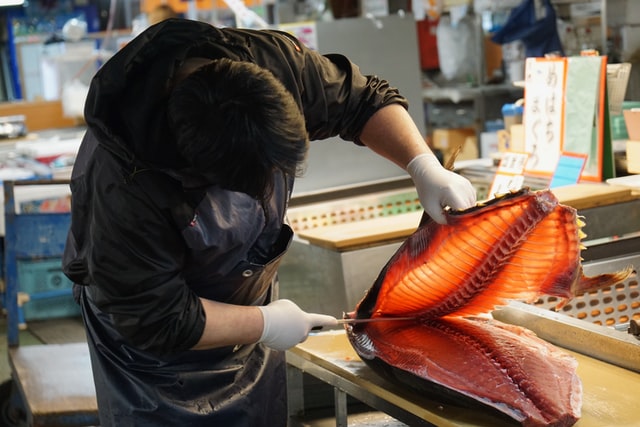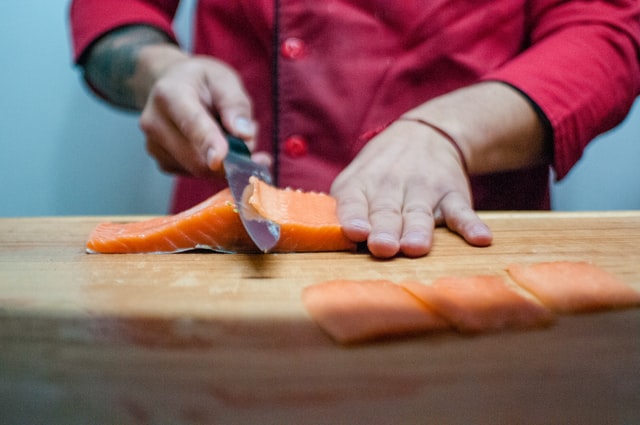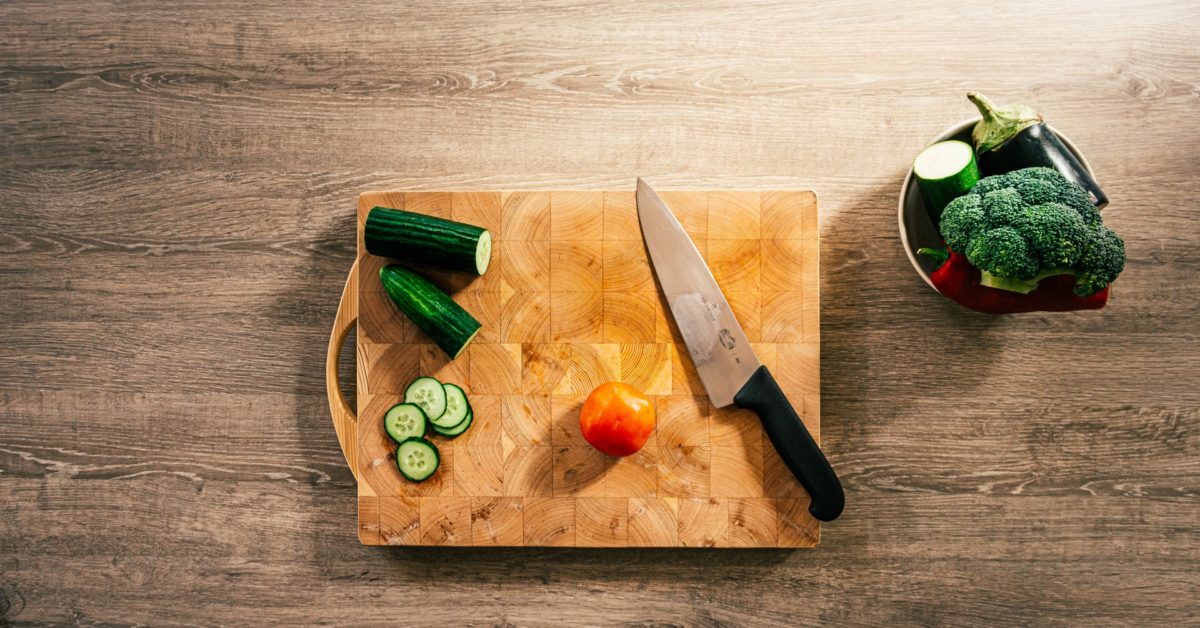One of the most basic – and essential – skills in the kitchen is learning how to use a knife. Whether you’re slicing, dicing, or chopping, a good sharp knife can make all the difference in your cooking. However, many of us do not know how to use a knife properly considering personal safety. One should know everything about using a knife and mastering basic this skill In this post, we’ll go over some basic tips on using a knife, so you can master this essential skill.
Using a knife and mastering this basic skill will not only increase a cook’s speed but will enhance the quality of the slices as well.
Related Article: Best Fillet Knives

Master Knife Using Skill
Here are some tips to master using a knife.
Related Post: Best Fillet Knife Sharpener
A. Basic Parts of the Knife
Do you know that a knife is not only composed of the handle and the blade? It actually has seven parts. The other five parts include the edge of the sharp side of the blade; the heel or the sharp side of the blade which is the nearest port to the handle; the bolster or the metal part which connected the blade and the handle; the rivet or the one which holds the handle and the metal part together and acts as a screw; and the tang or the edge of the knife handle and the one which is usually U-shaped or curved.
Related Article: How to sharpen a fillet knife
B. Basic Knife Handling
In handling, using a knife: master this basic skill you should be able to follow the reminders below:
- It is important how you hold a knife. In holding the knife, your thumb must be on one side of the blade and the index finger on the opposite side of the blade, then all three remaining fingers should have a good grip on the handle.
- The force exhorted should be on the handle of the knife. Use your three fingers on gripping and your wrist should make the effort.
- Your index finger should bend and the knuckle should rest on the blade and do not let your index finger points away from your direction.
RELATED POST: Why Children Should Learn the Importance of Cooking
C. Basic Cutting
There are 4 basic cutting techniques that you should learn. These techniques could all be very useful when you are preparing the ingredients before the actual cooking.
1. Slicing
Hold the knife properly. The edge of the knife should be resting near the chopping board while the handle should have angled upwards. Slicing should be done on a flat surface to prevent the knife from sliding over. While one hand is holding the knife, the other should be holding the ingredients. The latter hand should be crawled; the nails should be pointing down to the chopping board to protect your fingers from being cut. We use this technique for cutting larger and harder vegetables like carrots and meat.

2. Back-slicing
– Hold the knife properly and firmly. Use the backside of the edge in cutting. One hand should have a firm and crawled grip on the ingredients you are cutting. This technique is usually used in finer slices of ingredients, for example in cutting onion leeks.
3. Chopping
Unlike slicing, you should hold the knife straightly and have a firm grip on the handle. Your other hand should be crawled and hold the ingredient firmly. Another hand, which is holding the knife, should have pushed the knife firmly but gently. Do this with a steady and consistent stroke. You can do this quickly, but with extra caution. However, this technique should be accompanied by a very sharp knife so that you can do it faster and more efficiently.

4. Rock-chopping
–Like slicing, it has the same position. The tip of the knife-edge rests on the chopping board and the handle is angled upwards. The only difference is that your other hand should be holding the opposite side of the tip’s edge of the blade. Then, put your force on the handle and rock-chop the ingredients. This technique works best if you want a finely minced vegetable like garlic and celery.
4. Basic Sharpening
To be able to master the basic skills in using a knife, you should always check the edge of the knife and whether it is still sharp. If not, you can use a sharpening tool to keep it in top shape or you can simply buy a new one to replace it.
Conclusion:
These tips will help you use your knife more confidently and be able to master this along the way. Knife skills are important for every cook. Whether you are a beginner or an experienced cook, there are always new things to learn about knives and how to use them safely and efficiently in the kitchen. The four basic knife skills we’ve covered in Using a Knife: Master Basic Skills article will help you get started. Be sure to practice these techniques regularly so that they become second nature. With a little bit of practice, you’ll be able to chop, slice, dice, and sharpen like a pro!
Related Article: Kitchen Etiquette In Cooking




